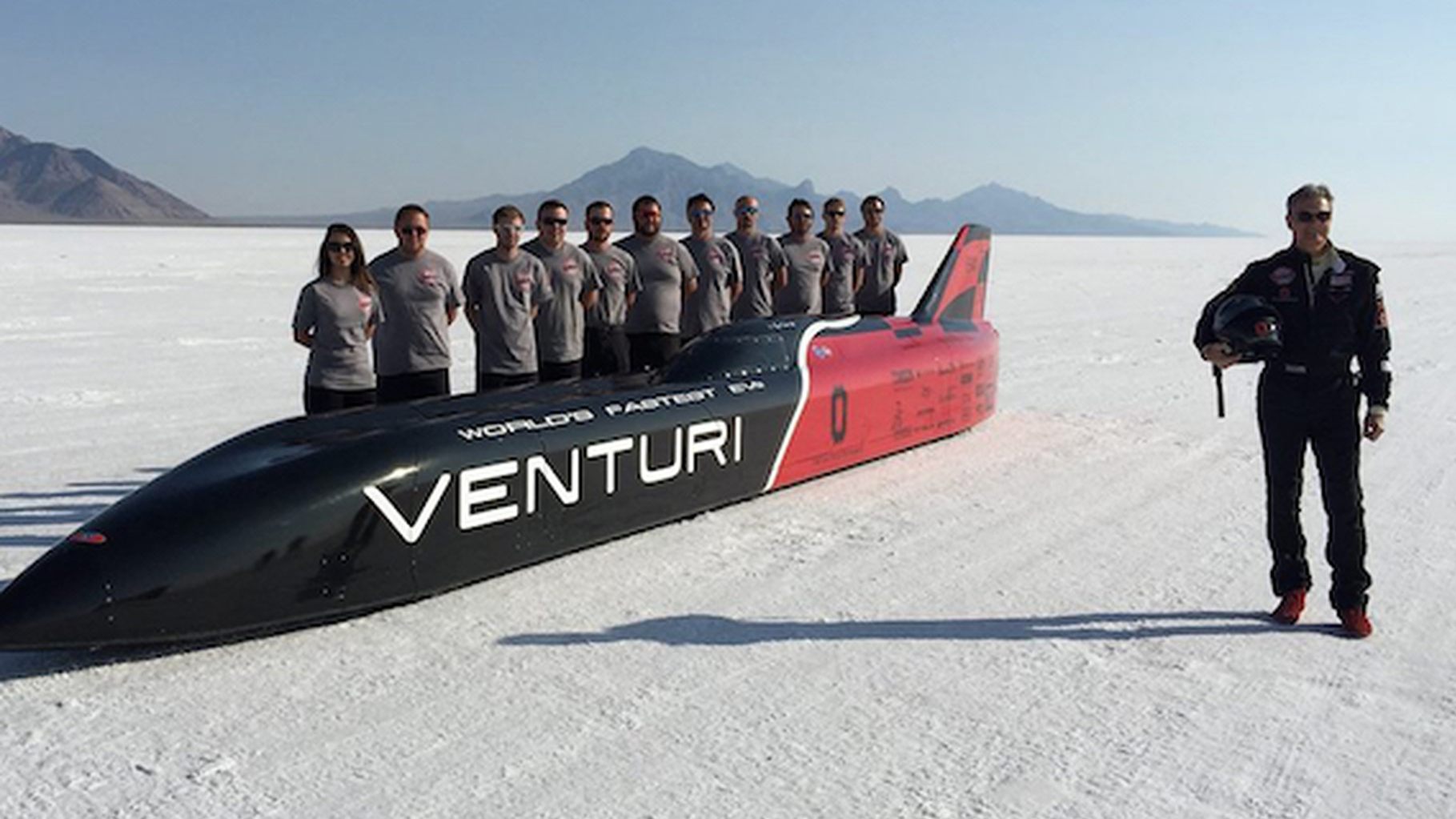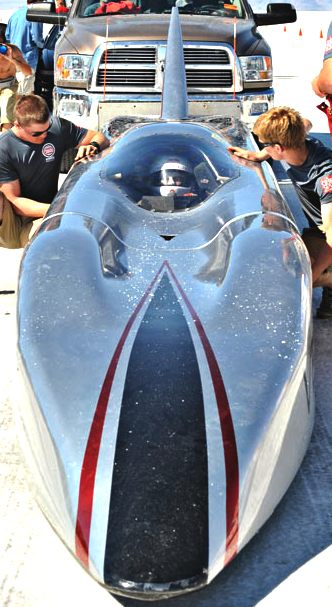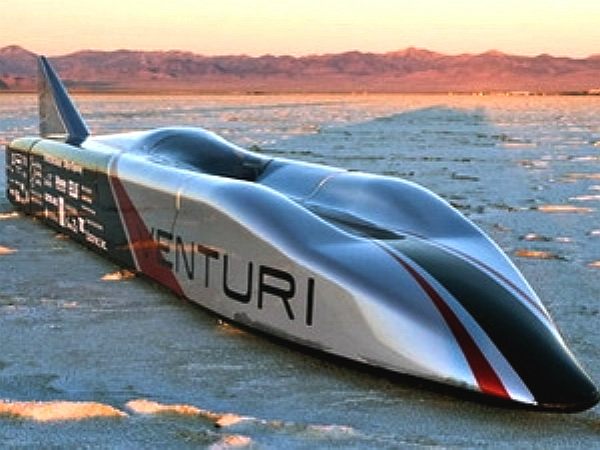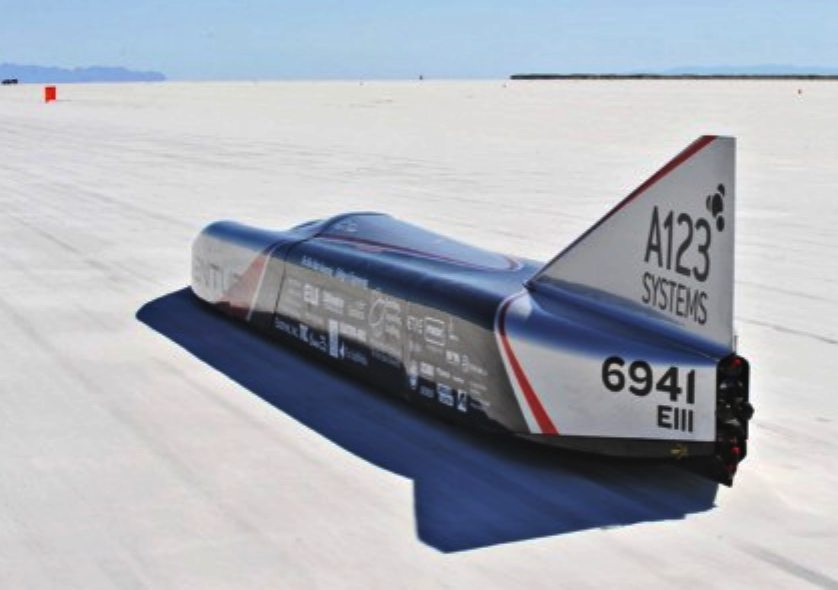|
BUCKEYE BULLET 2 - HYDROGEN FUEL CELL
AUTOMOTIVE A TO Z CHARITY CLIMATE CHANGE CONTACT EVENTS SITE INDEX
|
|
|
Ohio
State University has a proud tradition of fielding electric land
speed record cars that consistently raise the world record on the
Bonneville Salt Flats in Utah.
The student run team is based out of the
well funded Center for Automotive Research. They started in the Buckeye Bullet
1 in 2003-4. Progressing to the hydrogen
fuel cell car and then another battery
car in 2010. The Buckeye Bullet 2, designed and built by engineering students at Ohio State University,
set a land-speed record for hydrogen-fuel-cell-powered vehicles at the Bonneville Salt
Flats in September 2009. It hit 302.877 mph in the flying mile and 303.025 mph in the flying kilometer, though these are unofficial records until recognized by the
FIA.
20 SEPT 2009
The car is powered by two fuel cells fed from onboard tanks of oxygen and hydrogen. Heat from the cells is dissipated using an ice bath. A radiator on a vehicle going 300 mph would have caused too much drag.
Electricity from the cells feeds into a controller that converts dc power to three-phase ac. The resulting waveform goes to run a custom-built 700-hp induction motor. A six-speed customized transmission sends power to the machined, solid-aluminum wheels equipped with high-speed Bonneville racing tires.
The body is constructed of honeycombed Nomex panels for stiffness, strength, and light weight. The panels, in turn, were made using CNC-machined molds for accuracy. Several of the panels are outfitted with quick-release hardware, letting team members quickly maintain and troubleshoot the streamlined vehicle.
For safety, the driver sits in a prepreg
carbon-fiber/aluminum honeycomb composite tub. It adds a layer of strong and stiff crash protection around the driver and protects him from sharp edges. The tub contains a molded-in beaded seat and strengthened hard points to connect the driver’s restraint system.
For troubleshooting and documentation, the Bullet has a double-layer CAN communication system and uses state-of-the-art Bosch Motorsport data acquisition. Wireless telemetry and onboard diagnostics give the driver and crew real time updates on vehicle performance. In all, there are over 50 data channels.
The OSU Buckeye Bullet raised the record for the fastest EV in the US to 257 mph at Bonneville Salt Flats in October 2003, besting the old record of 251 mph held by White Lightning. The 31 feet long streamliner is powered by a 400 - 500 hp electric motor and 12,000 nickel-metal hydride batteries! The car is the product of a collaboration between students of the Ohio State University's Center for Automotive Research-Intelligent Transportation, its faculty and private industry.
Buckeye Bullet 2 tops 300 mph - Youtube
...
https://phys.org/news/2009-09-mph-hydrogen-powered-vehicle.html
Bonneville Salt Flats - Google Maps
|
|
|
This
website is copyright © 1991- 2020 Electrick Publications. All rights
reserved. The bird logo Climate Change Trust is an educational charity..
|



